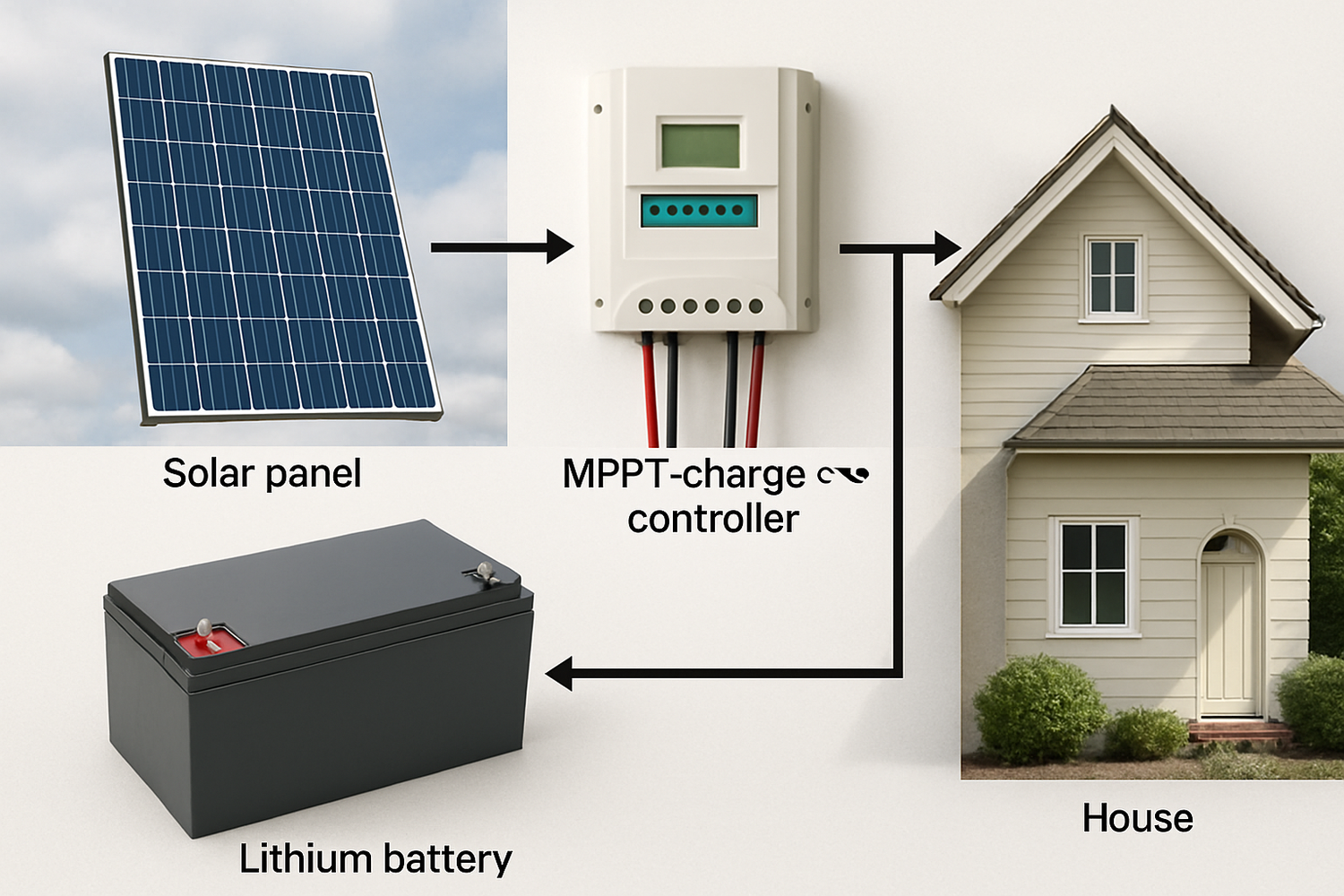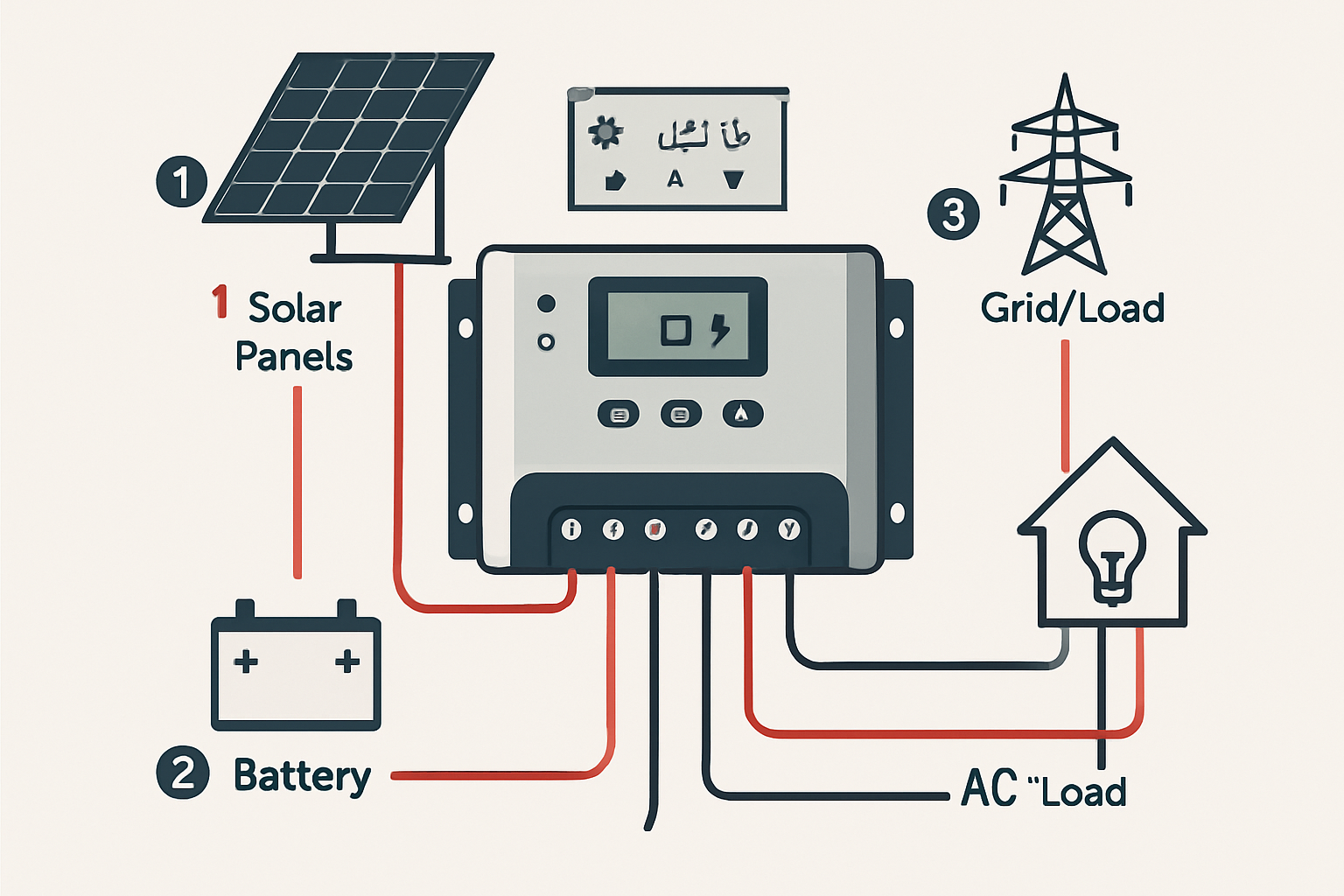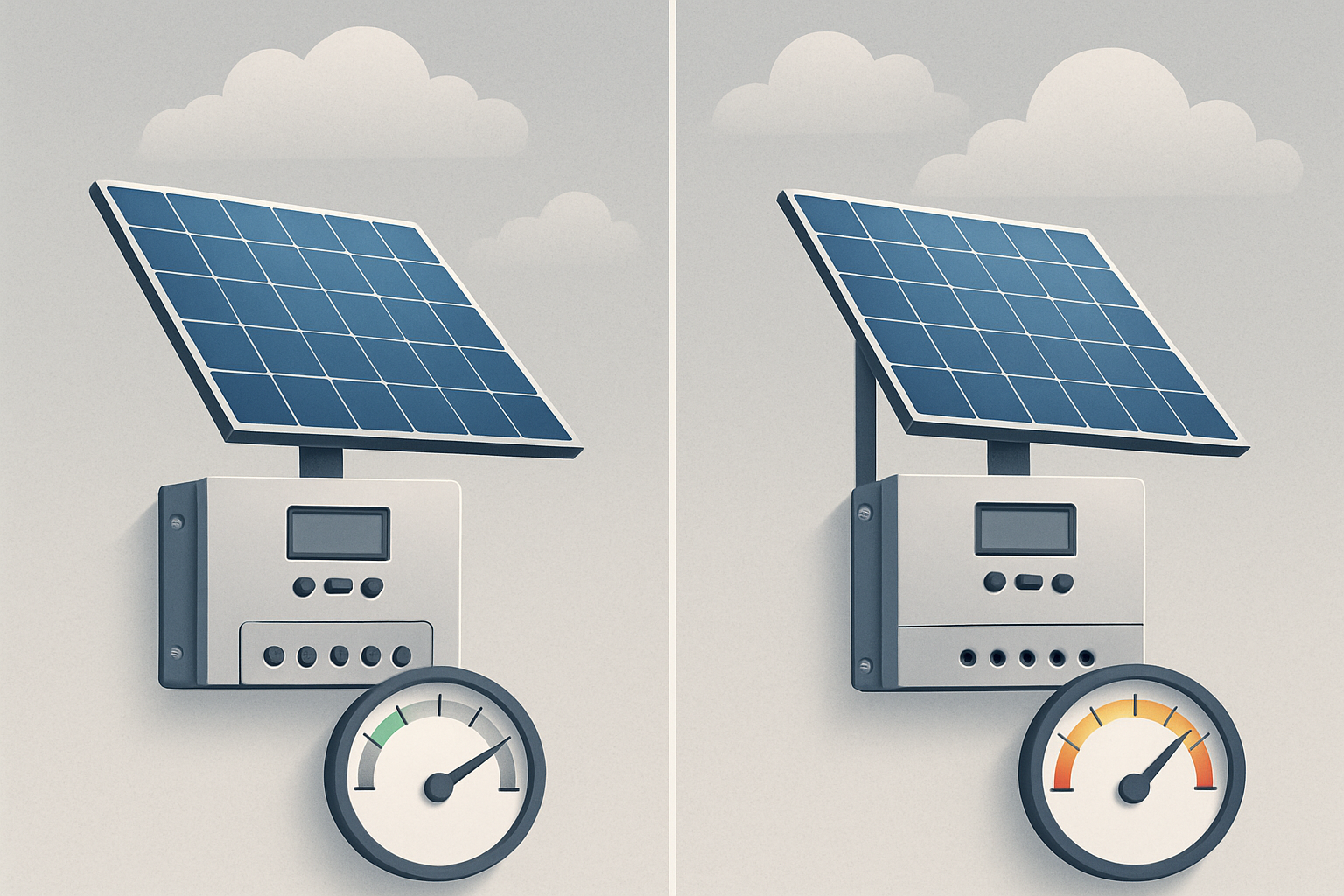The charge controller is the crucial link between your solar panels and your home energy storage system. It regulates the power flow, protects your batteries, and ensures system longevity. Maximum Power Point Tracking (MPPT) controllers are widely regarded as the superior technology, yet several persistent myths prevent homeowners from optimizing their systems. Believing these myths can lead to reduced energy harvest, premature battery degradation, and a lower return on your investment.
Myth 1: MPPT Is Always the Best Choice, No Matter the System
While MPPT controllers offer significant advantages, they are not universally necessary for every single application. Understanding the alternative—Pulse Width Modulation (PWM)—clarifies why MPPT is the dominant choice for most modern home energy storage systems.
Understanding the Core Difference: MPPT vs. PWM
PWM controllers act like a simple switch, connecting the solar array directly to the battery bank when the battery is low. This requires the solar panel's voltage to be very close to the battery's voltage. In contrast, an MPPT controller is a more sophisticated DC-to-DC converter. It can accept a higher voltage from solar panels and convert it down to the battery voltage, increasing the current in the process. This conversion allows the panels to operate at their optimal voltage for maximum power output, regardless of the battery's voltage.
When a PWM Controller Might Suffice
For very small, simple systems—like a single panel charging a small battery for a gate opener or an RV light—a PWM controller can be a cost-effective solution. In these cases, where the solar array is under 200 watts and its voltage matches the battery bank, the efficiency gains from an MPPT controller may not justify the higher initial cost.
Why MPPT Excels in Most Home Storage Systems
Modern home energy storage systems are rarely small. They involve multiple panels and high-capacity lithium battery banks. MPPT controllers can deliver up to 30% more energy from the same solar array compared to PWM controllers, especially in variable weather or cold conditions. As solar panel temperature drops, their voltage increases; an MPPT controller captures this excess voltage and turns it into extra charging current, a benefit completely lost on a PWM controller.
Myth 2: All MPPT Controllers Deliver Identical Gains
Assuming any device labeled 'MPPT' will perform the same is a costly mistake. The effectiveness of an MPPT controller depends heavily on its internal technology and build quality.
The Brains of the Operation: Tracking Algorithm Speed and Accuracy
The core of an MPPT controller is its tracking algorithm, which constantly searches for the maximum power point. Simpler algorithms like 'Perturb and Observe' (P&O) can be effective in stable sunlight but can get confused by fast-moving clouds or partial shading, causing them to lock onto a local, less powerful peak instead of the true global maximum. Advanced controllers use more sophisticated algorithms that sweep the entire voltage range faster and more accurately, ensuring maximum power extraction even in challenging conditions.
Component Quality and Its Impact on Longevity
The internal components, such as capacitors, inductors, and MOSFETs, dictate the controller's reliability and lifespan. Higher-quality components can withstand heat and electrical stress better, leading to a longer operational life and fewer failures. A well-built controller is an investment in the resilience of your entire energy system.
Myth 3: The High Cost of MPPT Outweighs the Benefits
The initial price of an MPPT controller is higher than a PWM, but focusing only on the upfront cost ignores the long-term financial picture and the total value of the energy harvested.
Calculating the Return on Investment (ROI)
The primary financial benefit of an MPPT controller is its ability to generate more power from your solar array. This increased energy harvest directly translates to lower electricity bills or faster charging for off-grid independence. While an MPPT unit might cost more initially, the additional energy it produces often pays back the price difference within a few years. For example, a system that gains an extra 500 kWh of electricity over its lifetime could save $60 at an electricity rate of $0.12/kWh, easily covering the initial cost difference.
Cost-Benefit Comparison
| Feature | PWM Controller | MPPT Controller |
|---|---|---|
| Initial Cost | Low | High |
| Energy Efficiency | 70-90% | Up to 98% |
| Performance in Cold/Cloudy Weather | Fair | Excellent (up to 30% more power) |
| System Design Flexibility | Limited (Panel voltage must match battery) | High (Can use higher voltage panels) |
| Long-Term Value | Good for small systems | Excellent for most home systems |
How MPPT Maximizes Your Investment in Lithium Batteries
Lithium-ion phosphate (LiFePO4) batteries are a significant investment. They require precise charging profiles to ensure a long and healthy life. MPPT controllers are ideal for these advanced batteries because their multi-stage charging algorithms can be specifically tailored to LiFePO4 requirements, preventing overcharging and undercharging that can cause damage. Using a basic controller with a premium battery is like putting economy tires on a performance car—it compromises the entire system.
Myth 4: MPPT Controllers Are Overly Complex for DIY Installation
While the technology inside is advanced, modern MPPT controllers are designed with the end-user in mind. Installation and configuration are often straightforward, with features that simplify the process.
Modern Features: Auto-Detection and User Interfaces
Many high-quality MPPT controllers feature automatic battery voltage detection for 12V, 24V, or 48V systems. They also come with clear LCD screens or Bluetooth connectivity that allows for easy monitoring and configuration through a smartphone app. This removes the guesswork and makes system setup accessible even for those without a deep technical background.
Key Installation Considerations
Proper installation is key to performance. This includes using the correct wire gauge to minimize voltage drop, ensuring adequate ventilation around the controller to dissipate heat, and placing it in a dry, protected location. Following the manufacturer's instructions is the most reliable way to ensure a safe and efficient setup.
Myth 5: The Nameplate Efficiency Is the Only Metric to Consider
A controller's peak efficiency rating, often advertised as 98% or higher, is important but doesn't tell the whole story. Real-world performance is influenced by several other factors.
Beyond Peak Efficiency: Performance in Real-World Conditions
A controller's ability to perform under adverse conditions like partial shading is critical. When a shadow falls across a panel, it can create multiple power peaks; a superior MPPT algorithm will find the true global maximum power point, while a lesser one will get stuck on a lower-output peak. The International Energy Agency (IEA) highlights that effectively managing variable renewable energy sources is a key challenge, making efficient harvesting in all conditions vital. According to the IEA's Getting Wind and Solar onto the Grid report, sophisticated control equipment is essential for maximizing renewable energy integration.
The Importance of Thermal Management
Electronic components lose efficiency as they heat up. A well-designed MPPT controller will have a robust heat sink and thermal management system to operate effectively even at high ambient temperatures. Poorly designed units may 'derate' or reduce their power output significantly to protect themselves from overheating, throttling your energy harvest when you need it most.
Evaluating Data Logging and System Monitoring Capabilities
Understanding your system's performance is key to optimization. Advanced MPPT controllers offer comprehensive data logging that tracks energy harvest, battery voltage, and charge cycles. This information is invaluable for diagnosing issues and understanding your energy production and consumption patterns. For a deeper look into the metrics that define system effectiveness, you can consult this ultimate reference on solar storage performance, which details how to measure and interpret key performance indicators.
Making an Informed Decision for Your Energy Independence
Moving past these common myths is the first step toward building a truly efficient and reliable home energy storage system. An MPPT charge controller is more than just a component; it is the engine that drives the efficiency of your entire solar investment. By understanding the nuances of its technology—from algorithm quality to thermal design—you can make an informed choice that maximizes your energy harvest, protects your battery investment, and accelerates your path to energy independence.
Frequently Asked Questions
What is the primary benefit of an MPPT controller over a PWM?
The main benefit is higher efficiency. MPPT controllers can harvest up to 30% more power from the same solar array by converting excess panel voltage into charging current, which is especially effective in cold or cloudy weather.
Can I use an MPPT controller with any type of solar panel?
Yes, one of the major advantages of MPPT controllers is their flexibility. They allow you to use higher-voltage solar panels (like those designed for grid-tie systems) to charge a lower-voltage battery bank, which can reduce wiring costs and improve system design options.
How does temperature affect an MPPT controller's performance?
MPPT controllers excel in cooler temperatures. As solar panels get colder, their voltage output increases. An MPPT controller captures this extra voltage and converts it into more charging current, boosting performance by up to 25% compared to a PWM controller in such conditions.
Is a more expensive MPPT controller always a better choice?
Not necessarily, but price often reflects the quality of the components and the sophistication of the tracking algorithm. A higher-quality controller may offer better reliability, faster tracking speed, and superior performance in challenging conditions like partial shading, making it a better long-term investment for a home energy storage system.





Leave a comment
All comments are moderated before being published.
This site is protected by hCaptcha and the hCaptcha Privacy Policy and Terms of Service apply.